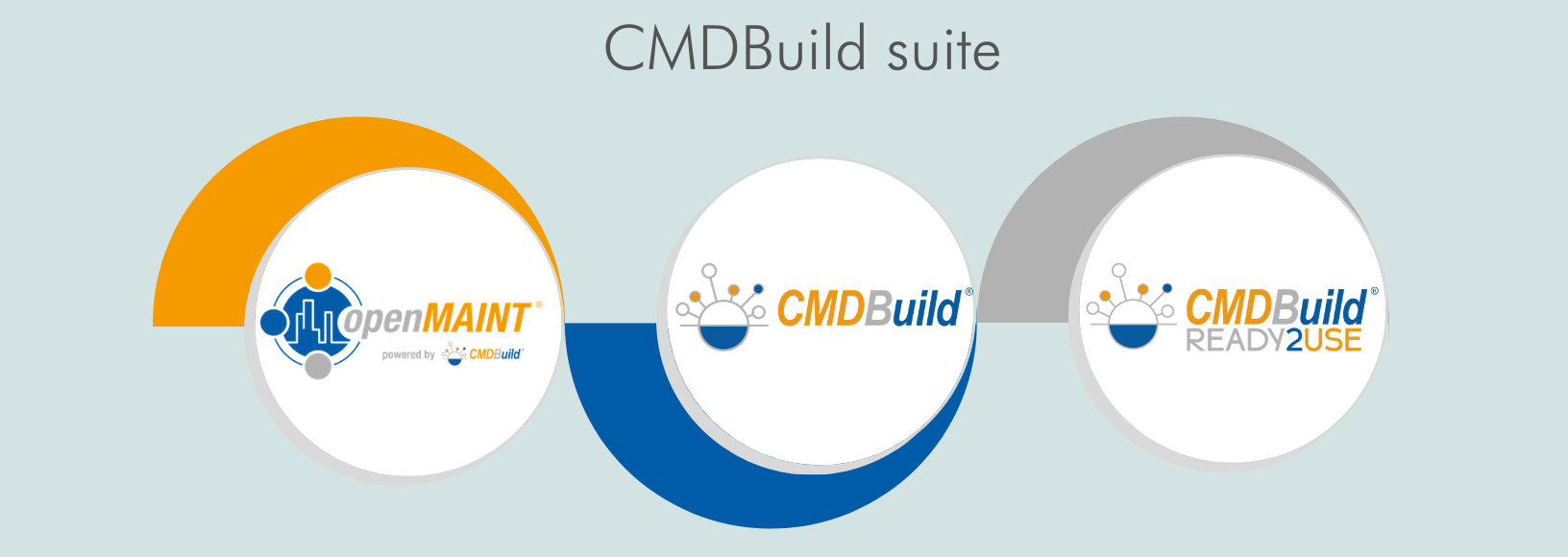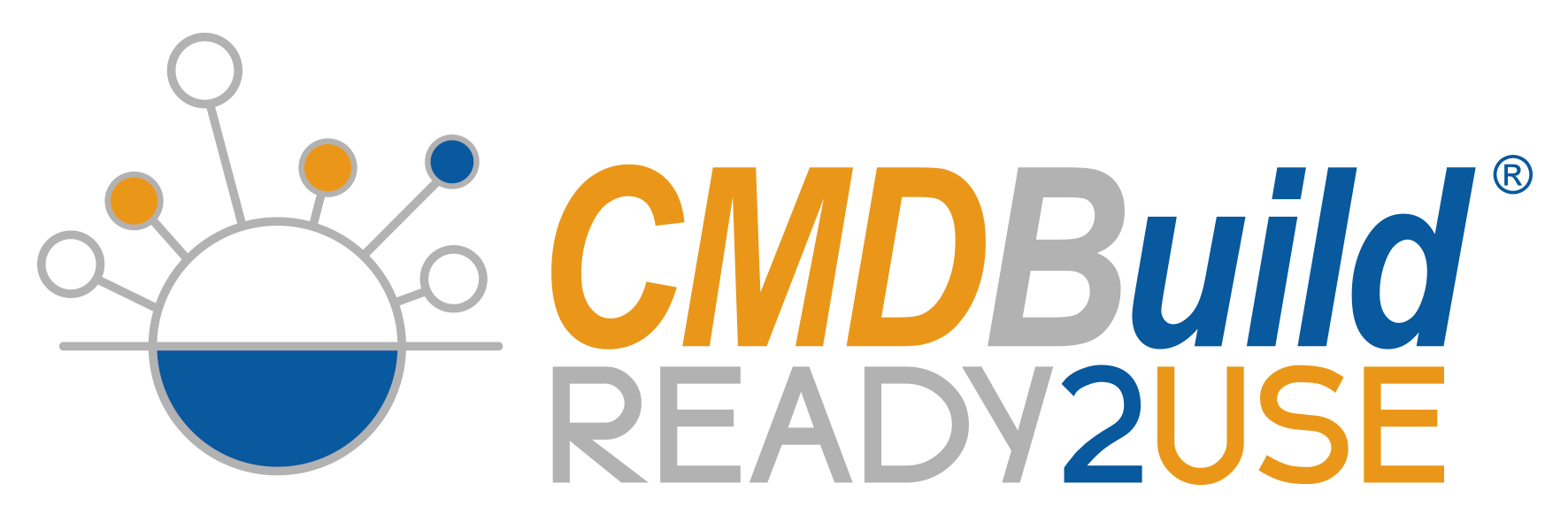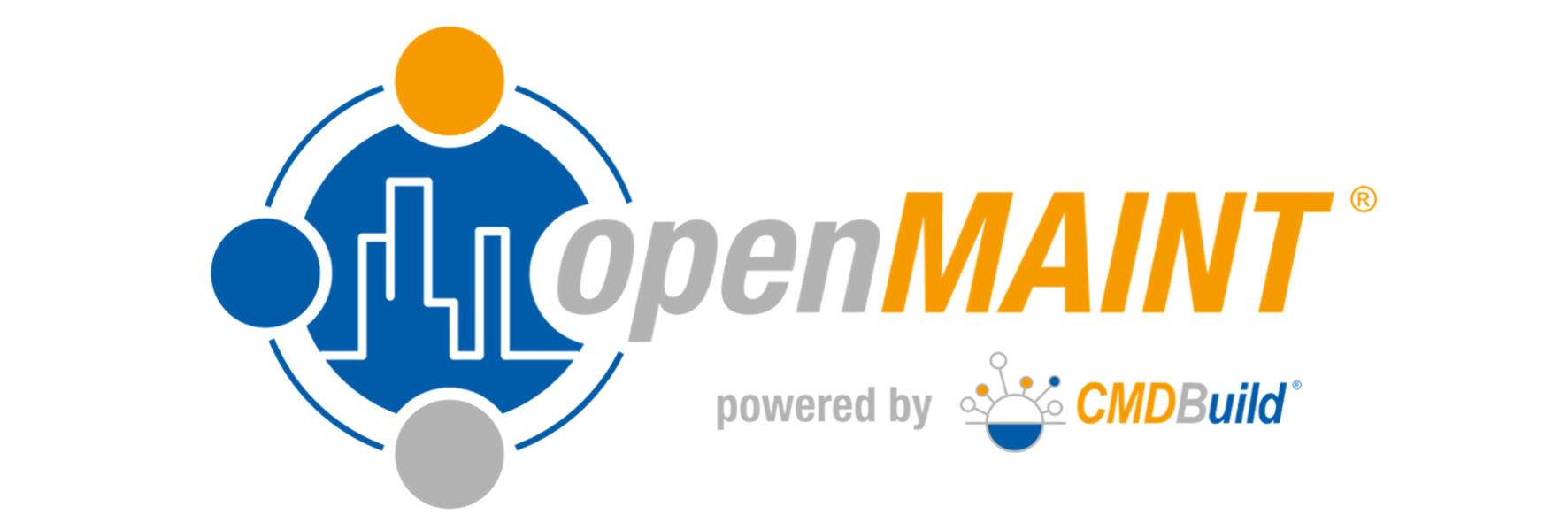- New versions of all CMDBuild Suite products have been released
- CMDBuild DAY 2020
- The provisional program of the interventions at the CMDBuild DAY 2020
- New features for massive data management
- CMDBuild Reference & Case Study: Industrial supplies distribution company (USA)
New versions of all CMDBuild Suite products have been released

During September we have completed the update of all the products of the CMDBuild Suite, as planned.
It has been a demanding job that has occupied us most of this year, development that we are now making available to everyone and which we will present with some videos at CMDBuild Day next month.
The new CMDBuild 3.3 version has been released for the basic platform, complete with all the Manuals.
On this page you will find the details of the new features of this version.
The new CMDBuild READY2USE 2.1 version for IT Governance has also been released, based on the new CMDBuild 3.3 platform and with many application innovations described in the last newsletter.
We have then released the new openMAINT 2.1 version for Facility Management, also based on the new 3.3 platform and with several new features described in the previous newsletter.
Finally, for those who take to the Annual Subscription for our products, the new version of the Mobile APP for smartphones and tablets is ready, completely rewritten in the user interface, in the available functions and in the communication logics with the server, adapted to the CMDBuild 3 version.
We are now already working at the next CMDBuild 3.3.1 version, currently scheduled for the beginning of 2021, on which we will update you in the next newsletter.
CMDBuild DAY 2020

We are now close to the sixth edition of the CMDBuild DAY, which will be held in videoconference on October 28th.
On the same date Tecnoteca will also celebrate its twentieth birthday.
As in previous editions, the objective of the event is to give the floor to those who have already adopted CMDBuild and want to share their experience with the participants of the meeting.
In addition to listening to numerous case histories, of which you will find a provisional program at the next news, during the day it will be also possible to:
- receive some information on market development trends in the areas covered by CMDBuild, presented by industry experts;
- learn more about the new versions of the CMDBuild Suite products, which will be examined in some videos;
- participate in one-to-one meetings in special virtual spaces, dedicated to the technical study of the different products or to commercial contacts.
CMDBuild DAY 2020 will be held in English and can be followed online through browser.
Participation is free but registration is required, everyone is invited to participate, even for only a part of the conference. Event hashtag #cmdbuilday2020.
The provisional program of the interventions at the CMDBuild DAY 2020
The highlight of the event is the presence of Companies and Organizations that use CMDBuild solutions and will present their case history.
Some scenarios and areas of use of the various applications will be described, with the aim of helping meeting participants to better understand the configuration potentials, the typologies of solutions implemented and the impacts in the Organization in which it is introduced.
The following interventions are currently confirmed (in pure alphabetical order, the schedule with the times still needs to be defined):
- Michael Collins - Applied Science (USA);
- Riccardo Carraro, Alessio Boaretto - CAV Concessioni Autostradali Venete (Italy) - CMDBuild / openMAINT for the management of inventory, monitoring and inspections of motorway infrastructure assets;
- Siegfried Bergmann - DLR GfR mbH (Germany);
- Vittorio Benintende - FCA Services Italy (Italy) - A CMDB solution to support the RPA journey;
- Paolo Colombo - IMA Group (Italy) - openMAINT for the management and maintenance of buildings and plants in the IMA Group production sites;
- Adriano Di Pasquale - Istituto Zooprofilattico Sperimentale dell'Abruzzo e del Molise "G. Caporale" (Italy) - CMDBuild for the management of genomic sequences of microorganisms in national systems and European projects;
- Luca Catti - Regione Emilia Romagna (Italy) - Emilia-Romagna Region re-start: from the configuration management to the ITSM with CMDBuild READY2USE;
- Vincenzo Curci - Senate of the Republic (Italy) - A migration experience of a complex CMDBuild instance from version 2 to version 3;
- Peter G. - Industrial supplies distribution company (USA);
New features for massive data management
 One of the most important new features of CMDBuild 3.3 concerns the revision and extension of the massive data intervention functions..
One of the most important new features of CMDBuild 3.3 concerns the revision and extension of the massive data intervention functions..
The massive data modification function has been restored and is available in the context menu of all the classes for which it is enabled. It allows to specify new values for the attributes to be modified and can be applied to all the cards of the class or only to some rows, pre-selected through filters.
The possibility of carrying out massive cancellations on the data of a class has been then added, always operating from the context menu.
Finally, the functions of massive data updating from external sources have been extended, reorganized and managed in a homogeneous way, which may include:
- files in CSV or XLS or XLSX format;
- tables of other relational databases;
- DWG files related to 2D AutoCAD floor plans;
- IFC files corresponding to 3D BIM models produced by architectural design tools.
For all these operations, the working methods include:
- the configuration of import descriptors (templates) in the CMDBuild Administration Module, with the definition of the data mapping (also applicable to multiple classes), the comparison key for updates, the error notification criteria and other parameters;
- the manual execution of operations from the interface of the Data Management Module;
- the recurring automatic execution of operations through the Task Manager tool that can be configured in the Administration Module.
CMDBuild Reference & Case Study: Industrial supplies distribution company (USA)
Introduction
Our company is based in the USA, serving all North America. Our IT footprint has grown over the years to be over 300 IT employees and more than 25,000 IT Assets. As is the case with many companies, as we have grown so have the number of disparate systems that we own to keep track of our IT inventory. The spreadsheets, databases, and other methods of tracking are not adequate any more.
It has become difficult to understand our environment and how the IT infrastructure supports the business. What is mission critical, or just important? Which departments would be affected by outages? At what stage in the lifecycle is my hardware and when should I refresh it?
It became very clear that we needed to consolidate our infrastructure data and map it to our business. After many failed attempts to do this with traditional spreadsheets or by building our own database, we came across CMDBuild and CMDBuild READY2USE.
We see this product as a framework to centralize our data, map it to business processes and regain control of our IT landscape.
There are two main phases of the project.
- Inventory Management: Consolidate our inventory of Hardware and Software and retire numerous old applications/databases.
- Business Function and Solution mapping: Understand all the business functions, the solutions that they use and map this to the infrastructure.
The support, advise and training from Tecnoteca has been second to none and we are now making our own changes to the application with confidence. The 7-hour time difference has not been a factor in this relationship.
Phase 1: Inventory Management
This initial phase has taken feeds from our Personnel database, Inventory Management Database, VMware vCenter and from OCS Inventory to give us a complete view of our inventory, which is never more than 24 hours out of date.
We chose OCS Inventory as our Hardware and Software Discovery tool which collects data from all our computer assets and reports back into CMDBuild. A future enhancement to OCS will allow us to report back on other non-computing resources (Switches, Routers, etc.).
Some immediate benefits have been that, our Service Desk can now search on a caller’s name and identify the hardware and software assigned to the user and be one step ahead when helping them.
The IT Asset Management team has up-to-date information and is aware of any changes to the environment and Desktop and Server technicians have real information available.
Phase 2: Business Function and Solution Mapping
The second phase has extended the Data Model to allow us to document our Business Functions and Solutions and map them to the infrastructure.
After a small amount of training we were able to design and build this ourselves. Our model defines the Business Taxonomy, the functions performed, and the solutions used to perform the functions.
Each Business Function is assigned a level of criticality to the business, from Mission Critical to General Purpose.
The Business Solutions are mapped to the Business Functions they support, the servers they are running on, the departments that own them and the IT teams that support them. Each Business Solution is assigned service levels for RTO (Recovery Time Objective), RPO (Recovery Point Objective), Real Time Performance and Data Recovery.
Current Status
Currently, we are in the process of entering the business data and mapping to the infrastructure. When complete, we will have a level of visibility into our IT Environment that we have never had before. The benefits to our organization will be seen in these areas:
- Asset Management
- IT Portfolio Management
- Business Continuity Management
- Vulnerability Management
- Enterprise Architecture, Standards, Life Cycle Management, Software Version Management
- Service Desk and Operations
Further integration with OCS Inventory will allow more complete Inventory Management across all Infrastructure Hardware and Vulnerability Management.
Peter G. - IT Architecture Manager


